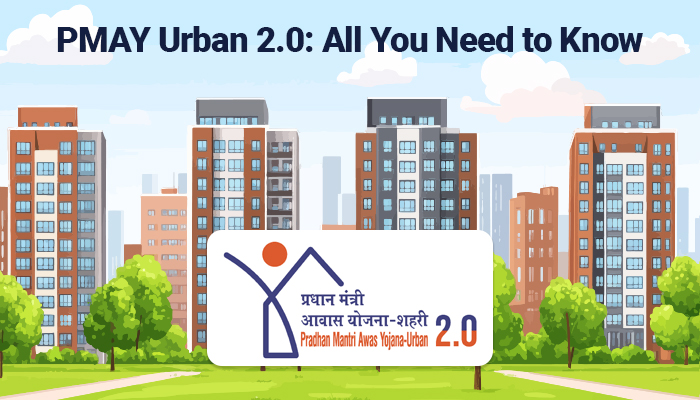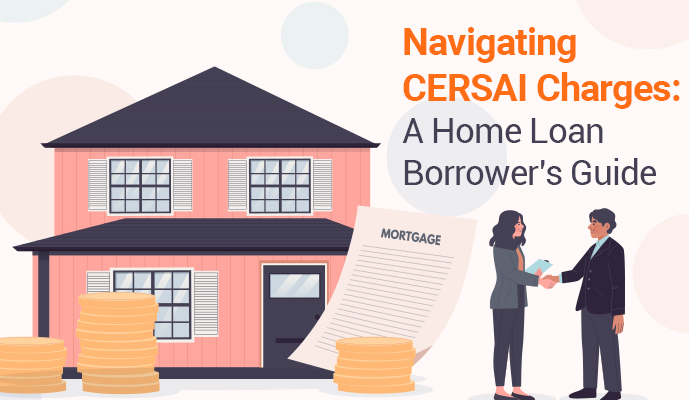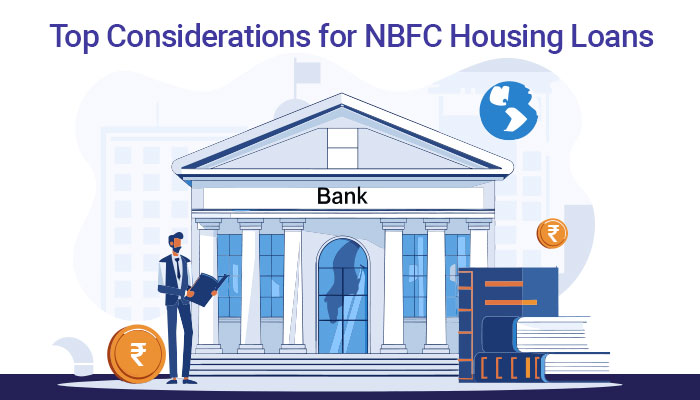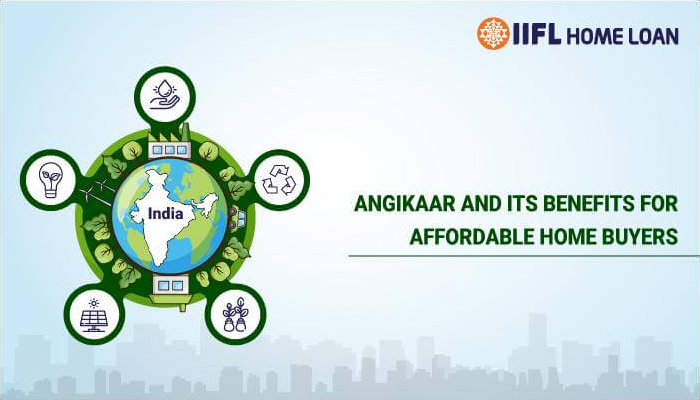List of Government Housing Schemes in India

Government housing schemes in India are designed to provide affordable housing solutions to various segments of the population, addressing the diverse needs of urban and rural residents. These schemes are part of the government's broader effort to ensure that every citizen has access to safe and adequate housing. From large-scale urban development projects to targeted rural housing initiatives, these programs are crucial in bridging the housing gap in the country.
Affordable housing is a cornerstone of social stability and economic development. It provides families with the security of homeownership, fosters community development, and stimulates local economies. Moreover, it helps reduce socio-economic disparities by offering low-income groups a chance to improve their living standards. This comprehensive guide highlights the intricacies of these schemes, empowering you to identify the one that best suits your needs.
Government Initiatives for Affordable Housing
The Indian government promotes home ownership through various incentives and housing schemes. Let's look at some of them below.
Pradhan Mantri Awas Yojana (PMAY)
Launched in 2015, the Pradhan Mantri Awas Yojna aims to achieve "Housing for All" by 2022. The scheme focuses on providing affordable housing to urban poor and slum dwellers through various mechanisms like in-situ slum redevelopment, affordable housing in partnership, and credit-linked subsidies.
The scheme targets Economically Weaker Sections (EWS), Lower Income Groups (LIG), and Middle-Income Groups (MIG). Beneficiaries must be first-time homebuyers and should not own a pucca house anywhere in India.
Applicants can apply online through the PMAY website or offline at Common Service Centers (CSCs). The application requires basic personal details, income proof, and documentation proving eligibility under the specific category.
Once you have applied for the scheme, you can check if you have been shortlisted through the Pradhan Mantri Awas Yojna list. The PMAY list is released yearly.
Indira Awas Yojana (IAY)
Renamed as Pradhan Mantri Gramin Awas Yojana (PMGAY), this scheme targets the rural poor, including Scheduled Castes, Scheduled Tribes, freed bonded labourers, and non-SC/ST categories.
Indira Awas Yojna provides financial assistance for the construction of new houses and the upgradation of existing ones. It ensures the use of sustainable and disaster-resilient technologies in housing construction.
Funds are directly transferred to the beneficiary's bank account to ensure transparency. The scheme encourages community participation and the use of local materials in construction.
State-Specific Housing Schemes
Various state governments provide housing schemes to their residents, especially the economically weaker sections of society.
Maharashtra Housing and Area Development Authority (MHADA)
MHADA offers affordable housing options in Maharashtra, focusing on providing low-cost housing to the economically weaker sections and low-income groups.
Applicants must be residents of Maharashtra with a valid income certificate. The application process involves registering on the MHADA website, followed by a lottery system to allocate houses.
Delhi Development Authority (DDA) Housing Scheme
The DDA Housing Scheme aims to provide affordable housing in Delhi through the allocation of flats across various categories, including EWS, LIG, MIG, and HIG.
Prospective buyers must register online, submit the required documents, and pay the registration fee. Allotments are made through a computerised draw of lots to ensure transparency.
Tamil Nadu Housing Board (TNHB) Scheme
TNHB offers a range of housing options — from flats and plots to houses — catering to different income groups. The scheme focuses on providing quality housing at affordable prices.
Applicants must meet the income criteria set by TNHB. The selection is based on a lottery system, ensuring an equal opportunity for all eligible applicants.
Urban Housing Schemes
Under this, we can study the housing schemes enlisted for the urban poor.
Rajiv Awas Yojana (RAY)
RAY aims to make India slum-free by promoting a slum-free city approach. It focuses on providing affordable housing solutions for the urban poor.
The scheme includes the redevelopment of existing slums and the creation of new affordable housing units, with an emphasis on community participation and sustainable development.
Atal Mission for Rejuvenation and Urban Transformation (AMRUT)
AMRUT aims to improve the quality of life in urban areas by ensuring robust urban infrastructure, including housing, water supply, sewerage, and transport.
The scheme promotes a public-private partnership model and leverages technology for efficient implementation. It has significantly improved urban living standards through holistic urban development.
Rural Housing Schemes
Let's understand some of the rural housing schemes by the central government.
Pradhan Mantri Gramin Awas Yojana (PMGAY)
PMGAY aims to provide every rural family with a pucca house with basic amenities. It focuses on the socio-economic upliftment of rural communities.
The scheme offers financial assistance for the construction of houses, along with provisions for toilets and LPG connections under other government schemes.
Rural Housing Fund (RHF)
RHF provides financial support to rural housing initiatives through loans and subsidies. It aims to improve the availability and affordability of housing finance in rural areas.
The fund targets rural households who lack access to formal banking services, ensuring they receive the necessary financial assistance for housing.
Special Housing Schemes
Apart from the ones listed above, there are some special schemes for different classes of people, let's look at them.
Affordable Rental Housing Complexes (ARHC)
ARHC focuses on providing affordable rental housing to migrants and urban poor, including industrial workers and informal sector employees.
The scheme involves converting government-funded vacant housing complexes into affordable rental units, ensuring adequate living conditions at minimal costs.
Credit Linked Subsidy Scheme (CLSS)
CLSS provides home loan interest rate subsidies on home loans for EWS, LIG, MIG-I, and MIG-II categories, making homeownership more affordable for these groups.
The scheme targets first-time homebuyers with specific income criteria. It reduces the loan burden, making housing finance accessible to a larger population.
Wrapping Up
India's housing schemes are diverse, addressing the needs of different demographics and regions. They collectively aim to provide affordable and quality housing for all. These schemes have significantly improved housing availability and affordability, driving socio-economic development and urbanization. The future of housing schemes in India looks promising, with continued government efforts and innovations to bridge the housing gap and enhance living standards.
Visit IIFL Home Loans to explore a wide range of loan options designed to meet your specific housing needs. We make sure that you get the best financial aid with our competitive home loan interest rates.
FAQs
Q1. What are the primary objectives of housing schemes in India?
The primary objectives of housing schemes in India include providing affordable housing, reducing slums, and improving living standards.
Q2. How can one apply for these housing schemes?
Applications can typically be made online through respective scheme websites or at designated government centres.
Q3. Are there any specific schemes for urban and rural areas?
Yes, there are distinct schemes like PMAY Urban and PMGAY Rural tailored to the specific needs of urban and rural populations.
Q4. What are the eligibility criteria for various housing schemes?
Eligibility criteria vary but generally include income limits, first-time homeownership, and residency requirements.
Q5. How have these schemes impacted affordable housing in India?
These schemes have significantly increased housing availability, improved infrastructure, and reduced socio-economic disparities by providing affordable housing options to various segments of the population.
Tags
Disclaimer: The information contained in this post is for general information purposes only. IIFL Home Finance Limited (including its associates and affiliates) ("the Company") assumes no liability or responsibility for any errors or omissions in the contents of this post and under no circumstances shall the Company be liable for any damage, loss, injury or disappointment, etc. suffered by any reader. All information in this post is provided "as is", with no guarantee of completeness, accuracy, timeliness, or of the results, etc. obtained from the use of this information, and without warranty of any kind, express or implied, including, but not limited to warranties of performance, merchantability, and fitness for a particular purpose. Given the changing nature of laws, rules, and regulations, there may be delays, omissions, or inaccuracies in the information contained in this post. The information on this post is provided with the understanding that the Company is not herein engaged in rendering legal, accounting, tax, or other professional advice and services. As such, it should not be used as a substitute for consultation with professional accounting, tax, legal or other competent advisers. This post may contain views and opinions which are those of the authors and do not necessarily reflect the official policy or position of any other agency or organization. This post may also contain links to external websites that are not provided or maintained by or in any way affiliated with the Company and the Company does not guarantee the accuracy, relevance, timeliness, or completeness of any information on these external websites. Any/ all (Home/ Loan Against Property/ Secured Business Loan/ Balance Transfer/ Home Improvement Loan/ NRI Home Loan/ Home Loan for Uniformed Services) loan product specifications and information that may be stated in this post are subject to change from time to time, readers are advised to reach out to the Company for current specifications of the said (Home/ Loan Against Property/ Secured Business Loan/ Balance Transfer/ Home Improvement Loan/ NRI Home Loan/ Home Loan for Uniformed Services) loan.
 Login
Login






















